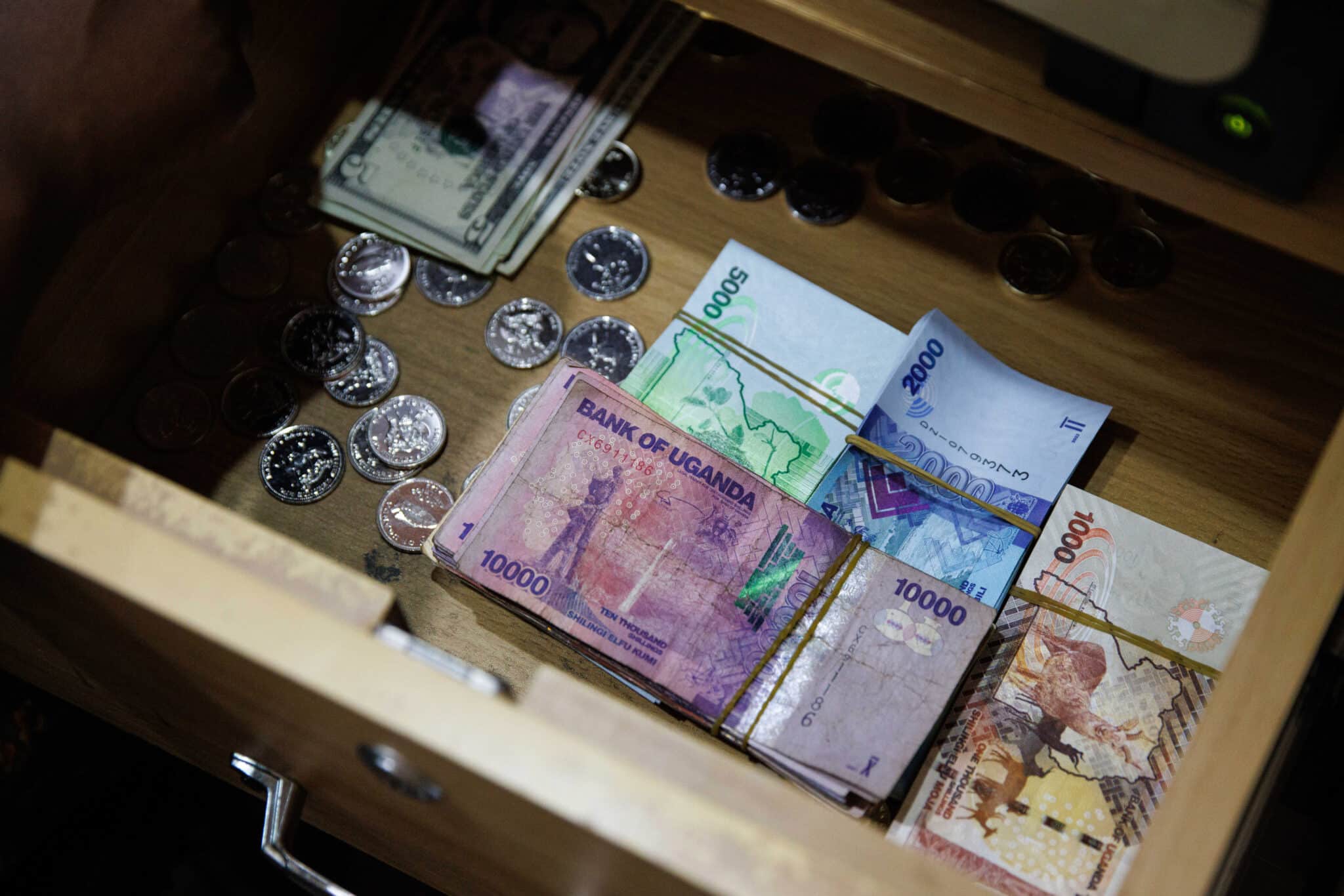Exports and Tight Policy Power UGX Gains
Uganda’s shilling rises 4.3 % y/y on robust coffee (KC=F) and cocoa (CC=F) exports; high local yields and disciplined auctions lift reserves to US$4.9 billion despite firm DXY. (KC=F, DXY)

Uganda’s shilling has defied regional gravity in 2025, appreciating roughly 4.3 percent year-on-year against the US dollar while neighbours’ units weakened. Dealers attribute the rally to record export receipts, high real interest rates and tight monetary coordination that preserved investor confidence even as global dollar liquidity tightened.
Bank of Uganda (BoU) data show the currency trading around UGX 3,645/USD in late October, up from 3,810 a year earlier. The improvement mirrors external rebalancing: coffee, cocoa and fish exports rose sharply, lifting foreign-currency inflows by nearly US$3 billion year-on-year and helping rebuild reserves to US$4.9 billion (≈ 5 months of import cover). Inflation slowed to 4.8 percent y/y in September, comfortably within the 5 percent midpoint of BoU’s target range, allowing the policy rate to stay at 9.5 percent even as Kenya and Tanzania leaned looser.
Market mechanisms reinforced credibility. T-bill yields between 12–14 percent and disciplined auction calendars kept non-resident participation high, sustaining demand for shilling assets. The currency also benefited from conservative fiscal execution: the primary deficit narrowed toward 1.9 percent of GDP on stronger tax mobilisation, reducing external borrowing needs. By contrast, Kenya’s debt ratio near 68 percent and Tanzania’s continued FX interventions signalled tighter fiscal space.
Still, analysts caution that strength brings costs. Exporters earning in dollars face margin pressure as local expenses rise in real terms, and tourism competitiveness may soften. Yet authorities consider that a manageable trade-off for macro stability. The BoU has repeatedly stated it “targets inflation, not the exchange rate,” but its open-market sterilisation pattern shows readiness to smooth volatility when inflows surge.
Globally, the backdrop remains mixed. A firm DXY and softening gold (XAUUSD) prices could test commodity-linked inflows later in Q4, though forward contracts in coffee (KC=F) and cocoa (CC=F) remain above five-year averages. The policy mix—orthodox, data-anchored and communication-heavy—has turned Uganda into a regional benchmark for small-economy currency management.
Going forward, three gauges will determine whether the appreciation endures: export diversification beyond agro-commodities, remittance growth as Gulf labour markets slow, and capital-flow behaviour once US yields stabilise. For now, the shilling’s firmness symbolises macro credibility in a volatile frontier landscape.





